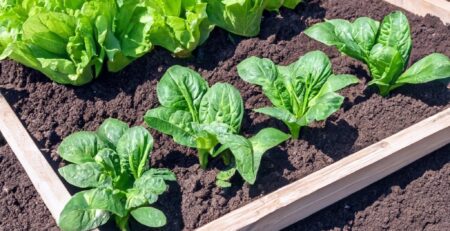Fun Flower Facts: Brain Flower
Celosia cristata, also known as cockscomb or “brain flower”, is a annual that makes for an interesting piece in the garden. Here are some interesting facts about this annual:
- The crested blooms of the cockscomb give this plant its nickname of the brain flower due to its resemblance to a brain, and it comes in a variety of colors, including red, orange, and yellow.
- Cockscomb makes for a great cut flower due to its strong, stiff stems and will last 5-14 days in a vase.
- While its origins aren’t completely known, celosia is common in the wild in China.
- Flowers bloom in the summer and well into the fall to the first frost.
- Pinching back the first bloom will encourage the plant to produce more blooms and branch out.
The flower head of Celosia cristata has a brain-shaped flower with a rounded, crest-like shape and weird, convoluted ridges. It is 3 to 12 inches wide and comes in a variety of colors. It is a striking plant that is best planted in large groups. Its vibrant color makes it an excellent choice for a plant bed, and it is beautiful when viewed from a distance.
The Celosia plant is not native to any particular region; however, it is believed to have come from Africa, India, and the stony regions of North and South America. Its name derives from the Greek word kelos, which means burned. It became popular in the 18th century as a landscape plant. It is, therefore, possible that its name comes from this word.

How to Care For Celosia in Pots?
There are several important steps to take when caring for your Celosia in pots. These include watering, fertilization, deadheading, and container design. This will ensure that your Celosia brain flower will thrive in its containers and provide you with a beautiful view.
Watering
Watering Celosia is important to keep them healthy and vibrant. Too much moisture can cause them to wilt and die, so water enough to keep the soil moist. If the leaves are dry and crunchy, prune them . Overwatering is as damaging as underwatering and can make your brain-looking flower look unhealthy. In general, Celosias prefer drier conditions than they do wet ones.
Watering Celosia in pots should be done every three to four days. It is best to water in the morning to prevent the soil from drying out. In winter, watering should be done once or twice a week. In addition to watering your Celosia plants regularly, you can add a supplemental bloom-boosting fertilizer to the soil once a month.
Fertilizer
Celosia plants need a lot of water and fertilizer to thrive. The ideal location for them is where the plant receives two hours of full sunlight per day. However, prolonged drought can shorten their lives. Symptoms of over or under-watering include yellowing of the leaves, rotting of lower leaves, lack of blooms and leaves, and crown or root rot.
You should apply fertilizers for Celosia plants every two to three weeks. The best fertilizer for this plant is an organic liquid fertilizer that you can apply through irrigation water. Potted plants need more frequent applications of nutrients, approximately every two to three weeks, from May to September. Potted Celosias prefer a potassium-rich fertilizer. Fertilizing plants with water-soluble fertilizers is recommended to control pests.
Deadheading
Celosias can range in size from small, 4-inch varieties to very vigorous varieties that can reach 3 feet. A good rule of thumb for Celosia care is to deadhead them after the flowering stage to promote further growth. Deadheading is important for maximizing flowering time and preventing the plant from breaking off.
If watered regularly, Celosia brain flower plants will produce three seasons of blooms, while they are considered annuals in most climates.
Containers with holes
If you’re looking for a plant that can survive the winter, you might want to consider Celosia. This flower that looks like a brain can reach more than six feet in height and thrive in containers that allow easy water access. Aside from being a good filler plant, Celosia can also be grown indoors and will produce plenty of seeds.
If you’re planting a Celosia in a container, make sure it has drainage holes. They can suffer from root rot if they’re waterlogged. They’ll also struggle in shaded areas, so be sure to use containers that have several drainage holes.
Planting from Seeds or Store-Bought Seedlings?
When planting Celosia from seeds or store-purchased seedlings in pots, remember that they’re tender and sensitive to cold weather. Before planting them, you should prepare the soil by adding any necessary amendments. You should also rake the soil surface smoothly before planting. Once the soil is prepared, plant the seeds about 1/8″ deep. These seeds need to receive plenty of light in order to germinate. After sowing, wait about a week before thinning the seedlings to ensure proper spacing.
Celosia brain-shaped flower comes in a wide variety of colors and is easy to grow from seed or store-bought seedlings. You can plant them in pots or rows to achieve a colorful display in your garden. If you choose to plant seeds, choose cultivars that bloom in different colors and heights. For example, the Crested Armor cultivar produces flowers in shades of red, while the ‘Baby’ Celosia cultivar blooms in shades of yellow and orange.






